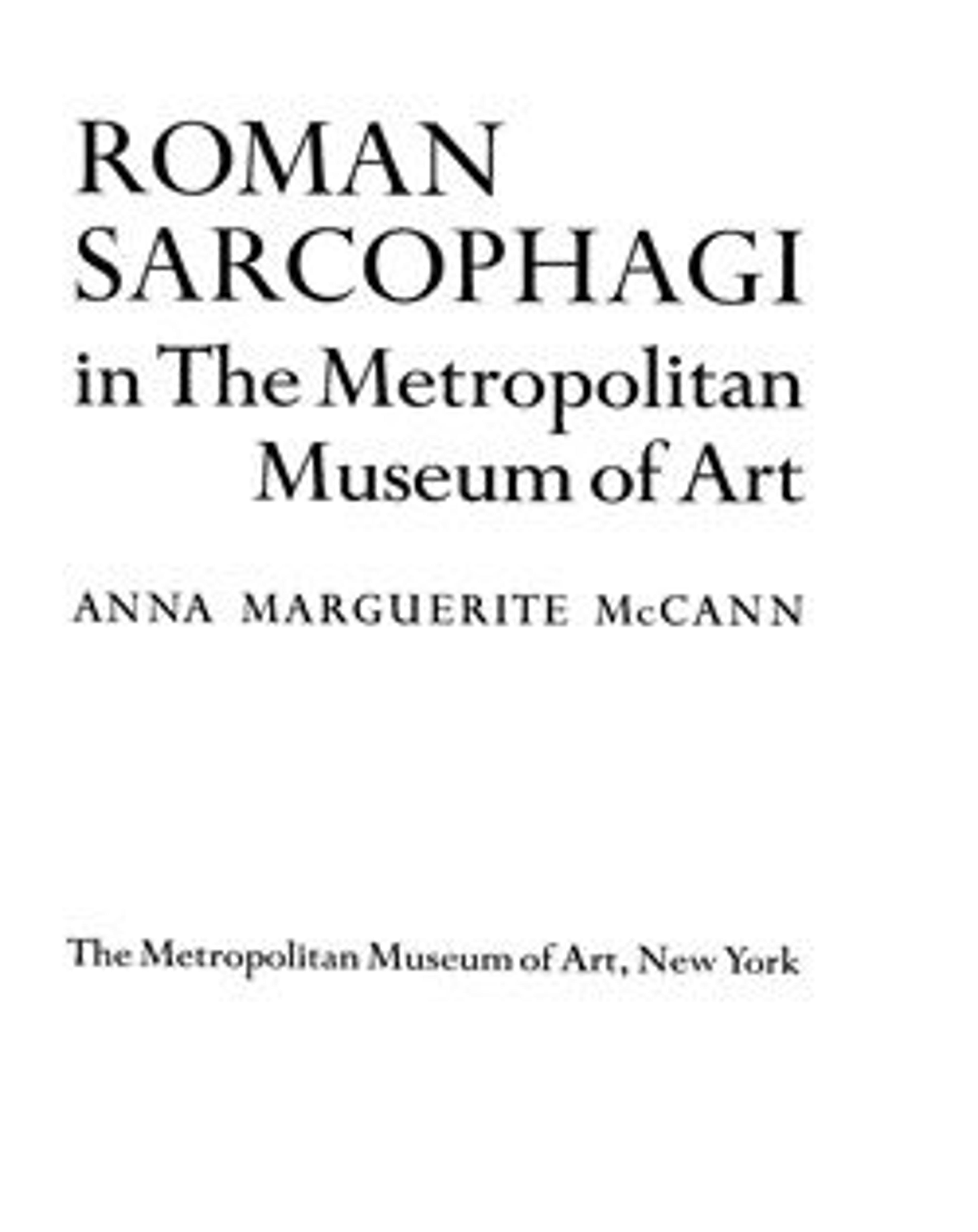Fragmentary marble sarcophagus with scenes from the Oresteia
Enough remains to identify the figures on this sarcophagus with the Oresteia legend known especially from the Greek plays of Aeschylus, Sophocles, and Euripides.
FRONT: Separate dramatic events from the cycle of plays were combined into one continuous scene. A complete sarcophagus in the Vatican Museum shows the entire relief as it was probably originally represented here. In the center, Orestes was represented killing his mother, Clytaemnestra, and her husband, Aegisthus, because his mother had murdered his father, King Agamemnon, on his return from the Trojan War. Immediately to the right, Furies, concealed behind a curtain, begin to attack Orestes for his crime of matricide. At the far right, he has taken refuge at the temple of Apollo at Delphi in order to be cleansed of his guilt, and he threatens the Furies who have followed him with his drawn sword. One exhausted Fury sleeps at his feet.
RIGHT SHORT SIDE: Electra, the sister of Orestes, together with another woman, mourning at the tomb of Agamemnon.
LEFT SHORT SIDE: The fragmentary left short side showed the recognition scene between Orestes and his sister Iphigenia, who had been sacrificed by King Agamemnon to appease the goddess Artemis at the outset of the Trojan War but had been spirited away by the goddess to Tauris on the Black Sea.
LID: The relief on the side of the 1id of this sarcophagus showed the entire story of Orestes and lphigenia at Tauris as recounted in a play by Euripides. At the far right, Orestes strides up the gangplank of a ship in which his sister awaits him with her attendant and a sailor.
FRONT: Separate dramatic events from the cycle of plays were combined into one continuous scene. A complete sarcophagus in the Vatican Museum shows the entire relief as it was probably originally represented here. In the center, Orestes was represented killing his mother, Clytaemnestra, and her husband, Aegisthus, because his mother had murdered his father, King Agamemnon, on his return from the Trojan War. Immediately to the right, Furies, concealed behind a curtain, begin to attack Orestes for his crime of matricide. At the far right, he has taken refuge at the temple of Apollo at Delphi in order to be cleansed of his guilt, and he threatens the Furies who have followed him with his drawn sword. One exhausted Fury sleeps at his feet.
RIGHT SHORT SIDE: Electra, the sister of Orestes, together with another woman, mourning at the tomb of Agamemnon.
LEFT SHORT SIDE: The fragmentary left short side showed the recognition scene between Orestes and his sister Iphigenia, who had been sacrificed by King Agamemnon to appease the goddess Artemis at the outset of the Trojan War but had been spirited away by the goddess to Tauris on the Black Sea.
LID: The relief on the side of the 1id of this sarcophagus showed the entire story of Orestes and lphigenia at Tauris as recounted in a play by Euripides. At the far right, Orestes strides up the gangplank of a ship in which his sister awaits him with her attendant and a sailor.
Artwork Details
- Title: Fragmentary marble sarcophagus with scenes from the Oresteia
- Period: Antonine
- Date: mid-2nd century CE
- Culture: Roman
- Medium: Marble-Luni
- Dimensions: reconstructed: 31 5/8 × 26 × 57 in. (80.3 × 66 × 144.8 cm)
- Classification: Stone Sculpture
- Credit Line: Fletcher Fund, 1928
- Object Number: 28.57.8a–d
- Curatorial Department: Greek and Roman Art
More Artwork
Research Resources
The Met provides unparalleled resources for research and welcomes an international community of students and scholars. The Met's Open Access API is where creators and researchers can connect to the The Met collection. Open Access data and public domain images are available for unrestricted commercial and noncommercial use without permission or fee.
To request images under copyright and other restrictions, please use this Image Request form.
Feedback
We continue to research and examine historical and cultural context for objects in The Met collection. If you have comments or questions about this object record, please contact us using the form below. The Museum looks forward to receiving your comments.
